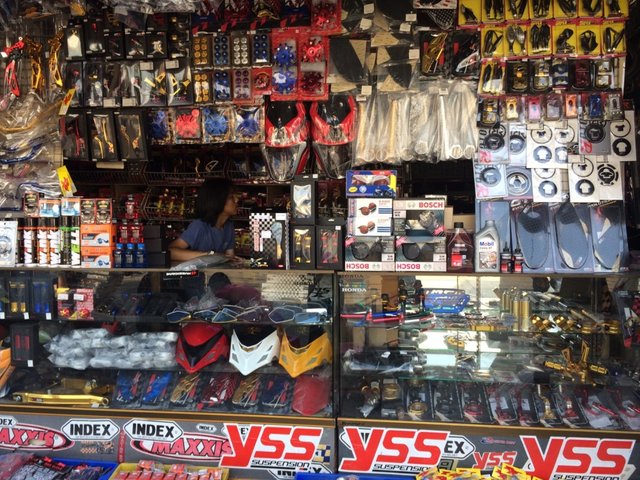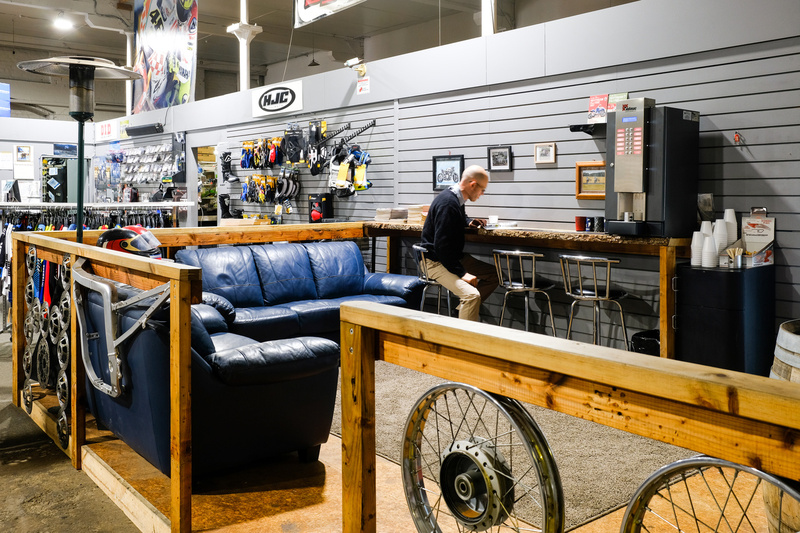Visit Our Motorcycle Shop for Expert Advice and Top Quality Products
Visit Our Motorcycle Shop for Expert Advice and Top Quality Products
Blog Article
Understanding the Crucial Parts of a Bike: A Comprehensive Guide for Fanatics
For motorcycle fanatics looking to boost their riding experience and ensure their bikes run smoothly, recognizing the important parts of a motorcycle is vital. Each component, from the engine's complex operations to the important duty of the braking mechanisms, not only impacts efficiency but likewise safety and security and convenience. This guide will stroll via the essential parts that every cyclist should know with, making it possible for informed choices in both maintenance and prospective upgrades. As we begin this expedition, one must ask: just how does each element communicate to develop the seamless trip every enthusiast seeks?
Engine Elements

The camshaft plays a crucial duty in managing the timing of the engine's valves, guaranteeing the precise opening and closing needed for efficient gas and air consumption, as well as exhaust expulsion. This timing is critical to preserving optimum engine performance and performance. Additionally, the carburetor or gas injection system, relying on the motorbike version, is in charge of blending air with gas in the appropriate proportion for combustion.
The air conditioning system, either air or liquid-based, functions to maintain the engine's temperature within functional restrictions, stopping getting too hot and ensuring durability - mx parts nz. Each part, meticulously created and incorporated, adds to the seamless operation of the engine, defining the motorcycle's power result and overall performance
Transmission System
Indispensable to the motorbike's capability, the transmission system makes sure reliable power transfer from the engine to the wheels. This system comprises a number of vital parts, consisting of the clutch, transmission, and last drive, each playing an essential role in translating the engine's power into movement. The clutch, generally operated by a hand lever, serves to involve and disengage the engine from the transmission, permitting smooth equipment adjustments and regulated acceleration.
The transmission, often referred to as the transmission correct, has a collection of equipments that motorcyclists can by hand move through to adjust the bike's rate and torque result. These equipments are set up in a sequence that enables the motorcycle to increase efficiently and preserve optimal engine performance throughout different speeds. A lot of motorbikes use a sequential gearbox, calling for the cyclist to move gears in a predetermined order.
Braking Devices
While recognizing the transmission system is crucial to using a motorcycle's power, just as essential is the ability to regulate and stop that power properly, which is where stopping mechanisms come right into play. Brakes are critical for safety and security and performance, giving the motorcyclist with the required control to browse different terrains and problems. Normally, motorbikes include two kinds of stopping systems: disc brakes and drum brakes.
Disc brakes are more common in modern-day motorcycles due to their remarkable efficiency. This system provides far better heat dissipation, constant efficiency, and enhanced stopping power, specifically in damp conditions.
On the other hand, drum brakes, though much less usual, are still found in some motorbikes. They function by pushing brake shoes against the internal surface of a drum attached to the wheel. While typically less effective in warmth dissipation and stopping power, drum brakes are simpler and a lot more economical.
Recognizing these stopping systems' nuances permits bikers to keep their bikes properly and appreciate the engineering that makes certain efficient and secure stopping.
Suspension and Steering
Suspension and guiding systems are crucial elements that significantly affect a bike's handling and ride comfort. The shock absorber, being composed of forks at the front and shock absorbers at the back, soaks up roadway abnormalities, boosting security and control. Front forks, upside down or typically telescopic, compress and rebound to reduce impacts, while rear shock absorbers maintain tire contact with the roadway, critical for grip and safety and security.
Guiding, centered around the handlebars, connects the rider to the motorcycle's directional control. The guiding head read what he said bearings guarantee smooth procedure, enabling exact ability to move. Proper alignment and maintenance of these bearings are critical for foreseeable guiding reaction and decreasing rider fatigue.
The suspension's adjustability is an additional vital element; preload, damping, and rebound settings permit personalization to suit numerous riding designs and conditions. This flexibility is crucial for enhancing performance, whether browsing urban streets or taking on tough trails. Technologies like electronic suspension systems supply real-time changes, enhancing adventure high quality across varied terrains.

Electric Solutions
After guaranteeing a smooth and controlled trip via effective suspension and steering systems, interest transforms to the electrical systems, a critical aspect of contemporary bikes. These systems play an important duty not only in beginning the engine but likewise in powering numerous components that improve the capability and safety of the motorbike.
At the heart of a motorcycle's electric system is the battery, which shops electric energy essential for beginning the engine and powering supporting systems - moto parts nz. The generator or generator, coupled with the rectifier-regulator, ensures the battery continues to be billed while the motorcycle is in operation, converting mechanical power right into electric power and keeping voltage degrees
The ignition system, another vital part, is in charge of firing up the air-fuel mix in the engine's cyndrical tubes. Modern motorcycles frequently use a digital ignition system, supplying greater efficiency and reliability compared to conventional systems.
Illumination systems, consisting of fronts lights, tail lights, and indications, are additionally vital, making sure presence and safety for the rider. Extra digital components such as sensing units, control devices, and presents add to sophisticated functions like fuel injection management, anti-lock braking systems (ABS), and electronic control panels, better boosting the riding experience.
Verdict
A comprehensive understanding of a motorbike's important parts, consisting of the engine, transmission system, braking devices, suspension, steering, and electric systems, is indispensable for lovers intending to enhance safety and security, comfort, and performance. Proficiency of these components enables educated decisions pertaining to upkeep and upgrades, inevitably improving the riding experience. By incorporating this expertise, cyclists read this can ensure their motorcycles operate at peak efficiency and integrity, consequently making best use of both enjoyment and durability of their lorries.
For bike fanatics looking to raise their riding experience and ensure their bikes run efficiently, comprehending the important parts of a bike is paramount.Indispensable to the motorbike's performance, the transmission system guarantees effective power transfer from the engine to the wheels.While recognizing the transmission system is crucial to using a motorbike's power, just as crucial is the capability to manage and stop that power efficiently, which is where braking devices come into play. Normally, motorbikes feature 2 types of braking systems: disc brakes and drum brakes.
An extensive understanding of more tips here a motorcycle's important parts, consisting of the engine, transmission system, braking mechanisms, suspension, guiding, and electrical systems, is indispensable for lovers intending to enhance safety and security, efficiency, and convenience.
Report this page